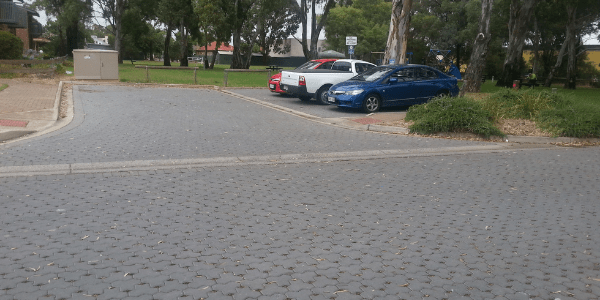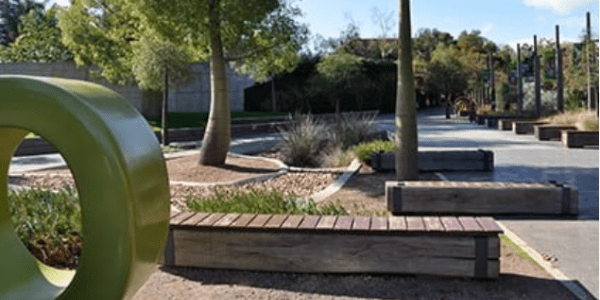Water sensitive urban design (WSUD) has multiple benefits and can enhance overall liveability of our communities.
Water sensitive communities are:
Liveable

Green and blue natural landscapes enhance human health and wellbeing by:
- providing mental health benefits
- facilitating the physical recovery from illness
- providing recreational (passive and active) areas
- providing spaces for community socialisation and connectivity of community spaces
- improving human thermal comfort through micro-climate management (cooling benefits) to reduce heat related stress and poor air quality.
Resilient

Integrated infrastructure that:
- provides protection against flooding
- provides a diversity of water sources at a range of scales to increase resilience under a uncertain future climate
- supply of recycled water resources (treated effluent and stormwater) providing freedom from water restrictions
- recycles and reuses treated sewage effluent as a non-climate dependent resource.
Productive

Enhance productivity and economic prosperity by:
- supporting industry: manufacturing including food production, and irrigated crops
- deferring or eliminating the need for drainage infrastructure augmentation to accommodate increased catchment impervious area coverage, attributed to urban consolidation
- providing high quality public open space, particularly those that include water, can increase adjacent residential property values, enhance commercial precincts and improve tourism opportunities
- avoiding capital or operating costs for potable supply schemes or defer supply augmentation costs through fit-for-purpose use of alternative water
- strategic and opportunistic investment in infrastructure renewals
- market advantages for residential developers who make a contribution to sustainability or offer the amenity benefits of recycled water.
Sustainable

More healthy natural ecosystems in urban environments that:
- protect urban waterways from degradation, through decreased total stormwater runoff and improved flow regimes (more natural high-flows and low-flows)
- reduce pollutant loads entering freshwater and marine environments
- replenish depleting groundwater with fresh water
- extend baseflows in urban streams and wetlands
- provide at source re-use of alternative water supplies to minimise energy use
- conserve our valuable water resource
- increase carbon sequestration.





